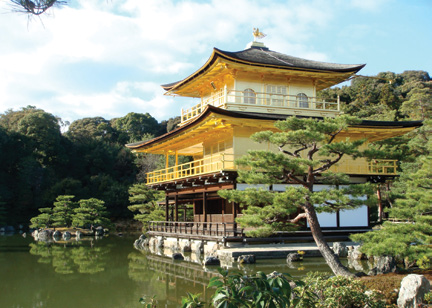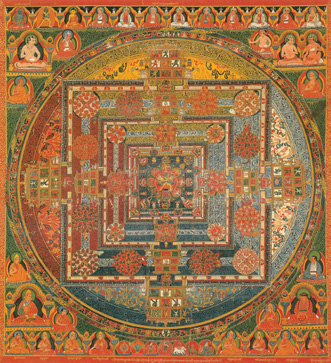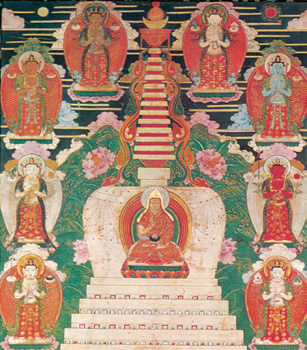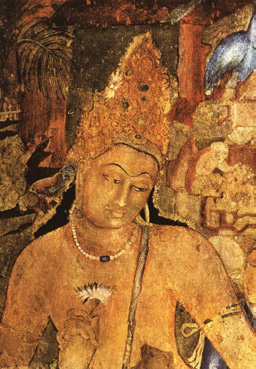An Illustrated Outline of Buddhism: The Essentials of Buddhist Spirituality (12 page)
Read An Illustrated Outline of Buddhism: The Essentials of Buddhist Spirituality Online
Authors: William Stoddart,Joseph A. Fitzgerald
Tags: #Philosophy

used as a support for meditation.
The Buddhas save human beings in four ways: (1) by their oral
teaching, as set out in the twelve categories of Buddhist Scrip-
tures; (2) by their physical traits of supernatural beauty; (3) by
their marvelous powers, their properties, and their transforma-
tion; (4) by their Names, which when uttered by men remove all
obstacles and assure rebirth in the presence of the Buddha.
T’ao-ch’o,
The Book of Peace and Happiness



Gilded bronze
stūpa
, Mongolia, late 17th century
The Golden Pavilion, Kyoto, Japan, late 14th century




T’hanka
depicting a
stūpa
surrounded by eight Bodhisattvas, Tibet, 18th century
T’hanka
of the
Kalachakra mandala
, Tibet, late 15th century


30
An Illustrated Outline of Buddhism
The Four Brahma-Viharas
The “Four Divine Dwellings”
or “Cardinal Virtues” of Buddhism
(1)
loving-kindness (
maitrī
)
(2) compassion (
karunā
)
(3) joy
(
muditā
)
(4)
serenity (
upekshā
)
Bodhisattva Padmapani, “bearer of the lotus”,
Ajanta Caves, India, 6th century A.D.


31
(8) The Nature and the Teachings of Buddhism
Buddhism emerged from Hinduism, rather as Christianity emerged
from Judaism. Christianity mediated Abrahamic monotheism to the
world of the Gentiles, just as Buddhism mediated the wisdom of the
Vedas to almost the whole of Eastern Asia. Christianity and Buddhism
are nevertheless completely original as revelations in their own right,
and not mere adaptations or developments of the respective anteced-
ent revelations.
Just as Christianity dispensed with the Jewish law (in the name of
worshiping God “in spirit and in truth”), so Buddhism dispensed with
the formal institutionalization of caste (in the name of a purely spiri-
tual brotherhood and sisterhood).
As explained in chapter 1, in
Theravāda
Buddhism the Highest
(or “Divine”) Reality is envisaged not as a Supreme Being (Almighty
God), as it is in most other religions, but as a Supreme State (
Nirvāna
).
Nirvāna
literal y means “extinction”, and this refers to the extinction of
all that is fallen, corrupt, finite, and impermanent. Buddhism (with the
exception of some
Mahāyāna
currents) does not look on the world as
a theophany, but as an exile; it does not look on it under its positive as-
pect of symbol or support, but under its negative aspect of corruption
and temptation—and so of suffering (
duhkha
).
It is on this basis that
Buddhism, characteristical y, expresses a positive reality in negative
terms: the intention is to underline the fact that
Nirvāna
(a negation
of the negative) is Reality: absolute, infinite, and perfect. In like man-
ner, Ultimate Reality is also called
Shūnyatā
(“Void”), that is to say, it is
empty of the ephemeral pseudo-plenitude of the world. Significantly,
